How the Holiday Season is Changing the National Identities of Mexico and the U.S. If you have traveled abroad lately, you may have noticed that national identities are becoming a bit vague. The cultural uniqueness that used to distinguish one nation from another has been quickly disappearing thanks to the accelerated pace of cultural contact brought about by globalization. Mexico and the USA illustrate this well as we go through the holiday season. Millions of Mexican immigrants, legal and undocumented, as well as tourism between both countries have created cultural contact zones unlike any in human history. As they have settled in these areas of the United States, Mexicans have adopted American habits even as they have maintained much of the cultural heritage they brought with them. For example, they love Thanksgiving turkey and on Black Friday you can find them shopping like crazy across the malls alongside Americans. December, however, is a Mexican fiesta north of the border. Los americanos are growing accustomed to seeing and joining the solemn Virgen de Guadalupe celebrations around December 12th and breaking piñatas in the noisy, colorful Posadas on December 15th-24th. Moreover, Mexicans have fused seamlessly La Noche Buena (Christmas Eve) and Christmas Day, so they can have their tasty tamaladas and receive the birth of Jesus with tons of gifts the good old American way. As many Mexican immigrants return to visit family in Mexico, they bring along these new cultural customs, especially their sons and daughters who were born and raised in the United States. You can see the influence of these new cultural ways in small towns and cities across the country. Mexicans now have their Buen Fin, a clone of Black Friday, and on Thanksgiving more and more people are preparing a turkey dinner a la americana or go to restaurants that offer a similar menu. As for Santa Claus, Christmas trees and carols, they are the norm everywhere. It may seem strange, but in Mexico City and Cuernavaca, you can even go ice-skating downtown! You could say Cinco de Mayo was the first cultural celebration to bring Americans and Mexicans together, and that lately Día de los Muertos and Halloween have provided more cultural glue that binds people on both side of the border. But it is the long holyday season at the end of the year that is having the biggest impact on our identities and how we see ourselves in Mexico and the United States. Mexicans who visit the U.S. and Americans who travel to Mexico are bewildered by this turn of events. National identities may still be around, but the unique cultural elements that separated them are blending fast and, in some cases, disappearing and becoming a thing of the past. 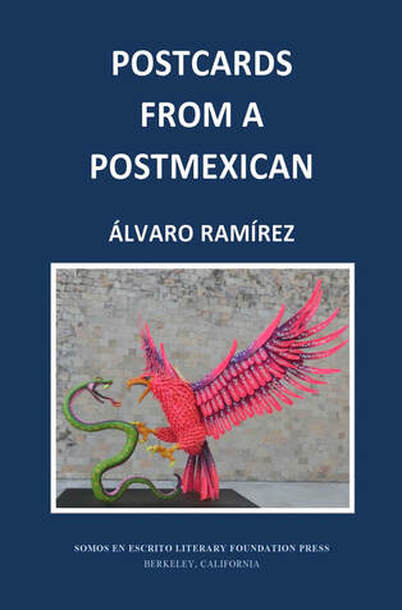 Somos en escrito Literary Foundation Press published a compilation of Álvaro Ramírez’s observations on changing cultural traditions: Postcards from a PostMexican. Click the cover above or visit Amazon to buy a copy. This postcard first appeared on Álvaro Ramírez’s Postcards from a PostMexican blog on December 24, 2019. This postcard was published under the title “How the Holiday Season is Changing Mexican and American Cultural Identities” in Cultura Colectiva, a Mexican online magazine, on January 2, 2020. 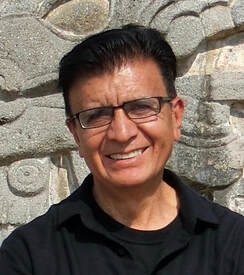 Álvaro Ramírez is from Michoacán, México. He migrated with his family to Ohio as an adolescent. He obtained a BA in Spanish and Education at Youngtown State University, and an MA and PhD in Literature from the University of Southern California. He has taught at various institutions including the University of Southern California, Occidental College, and California State University, Long Beach. Since 1993, he has worked at Saint Mary’s College of California where he is a Professor in the Department of World Languages and Cultures. He specializes in Spanish Golden Age and Latin American literature as well as Mexican Film and Chicano Cultural Studies. He also serves as Resident Director for the Saint Mary’s College Semester Program in Cuernavaca, México. In 2016, Prof. Ramírez published a collection of short stories, Los norteados, which received an Honorable Mention Award at the 2017 International Latino Book Awards. In addition, he has edited two online publications of Conference Proceedings: Imágenes de postlatinoamérica, volumen 1 (2018) and Imágenes de postlatinoamérica, volumen 2 (2019). He has also published articles on Don Quixote, Mexican film, and Chicano Studies in several academic journals.
0 Comments
Life Along the BorderBy Jesús Mena This trio of short stories tied for first place in the 2017 Writing Contest sponsored by the San Miguel Literary Sala, A.C., located in San Miguel de Allende, Guanajuato, Mexico. This feature first appeared in Somos en escrito on February 23, 2017. The Spirit We lived in a string of lean-tos behind an old service station next to Emilio’s Bar. All the families living here were just like chickens, going to bed at sunset, not because nature dictated our clocks, but because any light in a one-room hovel alerted the migra that mojados who had crossed the Rio Grande in the dead of night were nesting here. A four-year-old at the time, I was sleeping on the floor on the soft, red blanket that was my bed when late one night my grandmother flicked on the bare light bulb dangling from the ceiling. She stumbled in with our neighbor Victoria leaning against her shoulder. Victoria’s eyes were slits, her face ashen. My grandmother, who was a curandera, slid Victoria onto her bed and quickly ushered me out the door. “Vámonos! Fuera!” “What’s going on, huelis?” I whimpered. “Shht!” she shushed firmly, her finger on her lips. I had already weathered my share of immigration raids so when my grandmother demanded silence, I was a mouse playing dead. But my body shuddered when I heard dreadful groaning coming from inside our shelter. Victoria was in agony. Was she dying? The full moon that loomed over the large mesquite tree across the alley was a gray skull baring its ugly teeth at me. I could not bear to look at it so I sat on the cracked sidewalk, chin on my knees, staring at the alley and trying to ignore the wailing. It seemed like hours before my grandmother stepped out carrying a bucket filled with foul-smelling water that she splashed onto the alley. The water stained the gravel an eerie gray in the moonlight. I grabbed her skirt and pleaded, “Can I go in now, huelis? Please?” “Cállate, niño!” she uttered, shoved me aside, and rushed back in. Now I was terrified. My huelis loved me. She had never treated me like this. Victoria began screaming: “No! No!” Then I heard sobbing. I rushed to the door, hoping I could sneak a peek. The adults inside started arguing then the light seeping through the cracks of the wooden door went out, the rusty doorknob squeaked as it turned, and Victoria’s husband stepped out carrying a dark bundle followed by my father and my grandmother. My mother called me back in and put me to sleep. The hard wooden floor was humid, giving off a dull musty odor. Later that night I woke up screaming when I saw a translucent, blue figure floating through our shack. My grandmother ran to my side and picked me up in her arms. She brewed an herbal tea for me to fend off bad dreams and cuddled me on her lap, rocking me to sleep. Dawn came and my grandmother and my parents acted as if nothing had happened. No matter how much I pestered them, they dismissed my questions about the night before. We moved out of the area when my father landed a good-paying job as a plumber, but images of that eerie night were indelibly etched in my mind. My grandmother always assured me that my childhood imagination had conjured up this dark tale. It was not until she suffered a stroke that placed her at heaven’s door that she decided to rid herself of her earthly burdens. “Te acuerdas…de..de..aquella noche,..mi’jo…” she said, her voice faltering as she recounted what had happened that strange night. Victoria had had a miscarriage, she said. They didn’t call the priest to give the child his final blessing because the priest was an Anglo. They were afraid he would call the migra. They had buried the child in the empty lot behind Emilo’s Bar, and my grandmother had said the final prayers. Her dying wish was that God would forgive her. Her revelation was jarring. That lot with its scraggly bushes once was my favorite place to play hide-and-seek. It was also my sanctuary whenever I got in trouble with my parents. I had carved out a small hideout in the brush where I found solace. Somehow I felt like I had a friend there to console me. I lost that little haven when the garage owner turned that lot into a place for oil changes, and the earth gradually darkened to a pitch-black. The image of a baby drenched in this waste haunted me. My soul yearned to pay my last respects. I went to my hometown, which had grown into a small city with a cluster of ramshackle cottages on its outskirts. Ankle-high weeds covered the backyards there with well-worn paths leading to sagging outhouses; kids were playing stickball in the alley. I felt at home. But my old barrio was quite a ways from those shanties. I finally reached the street where we once lived. The panaderia at the street corner that once filled the air with the sweet scent of cinnamon from freshly baked pan dulce had been supplanted by a dry cleaner. The garage and the bar had been leveled, replaced by a large cinderblock building. A grocery store occupied the portion of the structure where the garage used to be. Next door, there was a sign that read La Señora Adivinadora with a large Tarot card taped to the windowpane that showed Persephone, the high priestess sitting on her throne between the darkness and the light in front of the Tree of Life. I walked into La Señora’s place, which had a glass counter with a collection of talismans mounted on shelves and a black curtain separating the small front room from the rear. The curtain slid open and a somber woman with dark brown eyes and black flowing hair strolled out. Around her neck hung a gold chain with an image of the Virgen de Guadalupe set in mother of pearl. “Buenas tardes,” she said as she walked to the counter. “Would you like me to read your fortune?” I looked past her to the rear of her unit, which stretched all the way to the alley. Concrete now covered the former back lot of Emilio’s Bar. “Come into my reading room back here,” she said. “A special spirit resides there that guides me.” I pursed my lips. “I know,” I nodded as I closed my eyes. The Stetson Winter unleashed heavy downpours that battered noisily against the windowpanes. Gonzalo tossed and turned. His older brother Maurilio was snoring exceptionally loud tonight. It was a nightly ritual that began with hoarse guttural mutterings that would then dull into a drone before Maurilio would finally slide into a deep sleep. The steady drip of the rainspouts added to his insomnia. With Maurilio’s snore down to a whisper, it became the mouse that prevented Gonzalo’s slumber. That vermin had been harassing the family for weeks despite the traps that had been set throughout the house. He heard it scratching at some package in the kitchen cabinet. He listened intently, hoping to hear the loud thump that said: This rata is dead meat! When it was satisfied with its treasure, the mouse scurried down the hallway, its claws rasping against the wooden floor, avoiding all the mines scattered on the floor. It was quiet again. The chiming of the clock told him it was midnight when his father’s truck pulled into the driveway. The pickup door opened and slammed shut. He heard his father come in the front door. His mother was still awake. “Hola, mi amor, I’m home,” he said jovially. “Where the hell have you been?” she asked. “Is that any way to greet your viejo?” he asked. When he was drunk, he was always sure he could sweet-talk her out of anything. They had been fighting for weeks. Gonzalo’s mother Mencha always made light of the squabbles whenever he asked her what was going on. The arguments that vibrated through the sheer walls usually began with his mother taking his flattery quietly for a while before the exchanges flared into nasty quarrels. Tonight, however, she seemed to have little patience for his accolades. “Ándale preciosa! Let’s jump into bed and make out like old times,” he said. “Those days are long gone,” she said sternly. “Ay dios, you are a lioness tonight,” he said, laughing lightly. “What got into you?” “Maybe I’m tired of being taken for a pendeja?” “I always treat you with respect,” he snapped. “Really? Partying till all hours? We’re barely making ends meet, and you don’t even come home from work on payday. You go out and spend money like it’s nothing.” “You worry too much, amorcito,” he said. “Come on, let’s have some fun.” “Get your filthy hands off of me,” she said. “You are my wife and I am going to make love to you,” he said firmly. “What? You didn’t get enough with Carla tonight?” “Carla? Who is Carla?” “You know what I am talking about! My friends have seen you with her. Una cantinera! Que asqueroso!” “Ay, amorcito mío. Chismes, chismes, chismes,” he said dismissively. “You believe everything you hear.” “I saw you tonight with her! Julia drove me over to the bar, and we waited till you left with her.” “I don’t know what you are talking about,” he said. “You filthy liar. Get the hell out of here! I never want to see you again!” There was a dead silence. “If I leave tonight, you will never see me again,” he said. “That will be too soon!” Gonzalo heard the front door bang shut, his father’s hurried steps on the porch, and the pickup rush out the driveway. His mother’s sobbing sent his heart racing. He desperately wanted to comfort her. He struggled to get up but his legs felt like lead weights. What could he tell his mother? How could he possibly soothe her? He found himself sinking into a dark pit as he sobbed himself to sleep. Mencha’s sadness blanketed the house like a fog the next day. She avoided Gonzalo anytime he tried to talk to her. He told Maurilio what he had heard the night before, and the two of them finally approached her. “Don’t worry, Amá, he’ll be back,” said Maurilio. “He wouldn’t walk away from us.” “He has nowhere else to go,” agreed Gonzalo. But the weeks turned to months without word of his whereabouts. His father’s departure spawned a deep guilt in Gonzalo. He should have had the cojones to get out of bed and intervene. He kept recreating the fight. All he had to do was step in and ask them what in the world was going on, and they would have been embarrassed and calmed down. Maybe they could have worked things out. Instead, he had just cried like a baby. An 11-year-old baby, for Christ’s sake. What pained Gonzalo most was how his mother’s life changed. She became the neighborhood tailor, stitching dresses for quinceañeras and other special occasions but the money she pulled in was not enough. She started cleaning homes for gringos on the other side of town, cooking, scrubbing floors, changing baby diapers, and doing laundry. On her first day, she left well dressed, eager for the challenges of the new job. She came home exhausted and just scrambled some eggs and frijoles for dinner. Her eyes slowly lost their luster. The thought of his mother on her hands and knees in some gringo home burned a hole in Gonzalo’s belly. He argued with her to stop working. He could drop out of school, get a job, but she was adamant that her kids would graduate from high school and carve out a better life. Gonzalo’s father now seemed like a ghost from his childhood – a carpenter who straggled home from work every day with his frayed Stetson sprinkled with sawdust. He would shake off his hat off in the front yard, walk in, smile at the family and head for the bedroom to read Western dime novels. He was a sullen man who ignored the silly banter or the rowdy spats between the boys around the dinner table. He wasn’t a real father. Gonzalo felt he had been abandoned since birth, a void that bred a rancor that gnawed through the remnants of his childhood innocence. Each night Gonzalo dreamed that he stood before the shell of a house under construction. There was the dense, sweet smell of sawdust and the piercing whine of the saw. He’d step in and his father stopped pounding his hammer, tipped back his hat, and stared at Gonzalo with a smile. Livid, Gonzalo struggled to confront him but found himself staring, impotent with rage. Eliminating all that reminded him of his father became an obsession. He trashed the stack of his father’s paperbacks that were covered with dust. He urged his mother to dump all of his father’s belongings. She refused. “They are his and he will return and get them one day,” she said. Gonzalo frowned. “Amá, how can you believe that jerk will ever return?” “Don’t you ever use such language in referring to your parents,” came her indignant reply. Her response only fueled his drive to erase his father’s existence from his world. One sunny afternoon when the family had fired up their barbecue pit in the backyard, Gonzalo was rummaging through his parent’s closet in search of a folding chair when his eyes zeroed in on his father’s dressy Stetson that he wore on his weekend parandas. He stared at it, grabbed it, walked out and threw it in the barbecue pit. Mencha gasped. The three of them looked on with an almost pious silence as the hat burst into flames and slowly became a gray sliver that blended into the burning charcoals. Fallout The drone of Mrs. Gray’s math class recital suffocated my thoughts. She bored me stiff. Mrs. Gray eyed the classroom as she paced the length of the blackboard, carefully seeking her next victim. She seemed to enjoy making us squirm. “Moisés, can you recite the nine’s multiplication table?” she said. Moisés walked timidly to the front of the class. He was clearing his throat when the shrill wail of the town siren shattered Mrs. Gray’s spell. We all leaped from our seats and scurried under our desks. From my hunched position, I watched an imposing Mrs. Gray march up and down the aisles, inspecting all the crouched bodies, making sure everyone was in the proper fetal position. “Make sure you are covering your eyes,” she said, raising her voice over the siren’s whine. “Benigno, get your legs completely under the desk.” The siren ceased its howl, the drill ending too soon, so we all crawled out from under our desks. I raised my hand before the teacher resumed her lesson. “Mrs. Gray, why do we cover our eyes in a bomb drill?” I asked. “To protect your eyes,” she said. “You could go blind from the light of an atomic explosion.” “But how does that protect us from radiation?” Mrs. Gray looked annoyed. “You know the auditorium is designated as a fallout shelter. Once the explosion is over, we’d go to the auditorium.” “But it’s got big windows. How can it protect us from radiation?” “And what about everyone else in town? ” chimed in Benigno. “Where are my parents supposed to go if they dropped a bomb on us?” “The town has a fallout shelter,” Mrs. Gray said frostily as the bell rang and we all raced raucously from the room and headed home. Moisés, Benigno and I savored the shade of the magnolia trees that towered over the landscaped yards on the gringo side of town as we walked home that muggy afternoon. “Did you guys check out the note Mrs. Gray sent home?” I asked. It was an official city memo that asked families to set aside a month’s supply of canned and dried foods, water and other necessities. It was part of the nuclear-preparedness program that city officials had unfurled with much fanfare. “A month? Sometimes we’re lucky if we got a pot of beans at the end of the week,” said Moisés. “I’m not gonna show this to my Dad,” said Benigno. He yanked the note from his book, crushed it into a wad and thrust it into the corner garbage can. We grew quiet. The three of us had seen the newsreels in the movie theater a couple of months ago warning all Americans to prepare in case Russia nuked our country. The film was frightening – an atomic bomb going off with a horrific boom followed by a ball of fire that spread into the sky like a giant mushroom. “Do you really think they’re gonna drop a bomb on our little town?” asked Benigno. “Of course. The Russians got a bomb aimed at every town in America,” I said. Benigno looked depressed. “The city bomb shelter is on the gringo side of town,” lamented Benigno. “How are my parents and my little sister gonna get there? We don’t even have a car.” “We gotta do something to help our families,” I declared. “Like what?” asked Moisés. “We could build our own fallout shelter,” I said, a bit surprised at myself. They looked at me skeptically. “Really?” asked Moisés. “Just how are we gonna do that?” “I don’t know but we gotta figure it out.” Moisés shook his head. “If we get hit, we might turn into some kind of nuclear monsters…” growled Moisés as he contorted his face, moaned and breathed heavily then started chasing Benigno. Benigno shrieked and sprinted away. My friends were trying to laugh it off but I knew they were as worried as I was. When I got home, my father had me lug some scrap lumber from his dusty blue pickup and stack it in the backyard. “What’s this for?” I asked. My father was a carpenter who would never let any lumber go to waste. “Not sure…might come in handy someday,” he said. “Can I have some of it?” “What you planning…a clubhouse?” “Something like that.” “You know where the nails and hammers are. Just don’t mess up my saw,” said Dad with a smile. I was ecstatic. It was the first time Dad had trusted me with his most prized possession – his electric saw. Lumber, nails, tools – we had everything we needed to build the fallout shelter. I rushed next door to tell my buddies. “Hey you guys! I got the stuff we need to make a bomb shelter.” Moisés and Benigno rushed over to my place to see but they seemed less than enthusiastic when they stared at the pile of mangled scrap with splinters and nails jutting out at odd angles. “You couldn’t build a doghouse with that,” said Moisés. When I pulled out my father’s electric saw, their eyes lit up. I squeezed the trigger switch and the silver blade roared to life. “Let me try that,” said Moisés. “I’ll teach you how to use it…if we build the shelter.” Benigno smiled, picked up a hammer and began driving rusty nails out of the lumber. My chest swelled as I taught Moisés how to use the saw. We began arguing about the proper architecture with the debate getting heated at times. The intermittent whine of the power saw and the banging of hammers soon eliminated the chatter. I called the club to order as I crouched on a small wooden crate. The shelter was finished except for the lead lining needed to protect us from radiation. Being the entrepreneur, I had talked Moisés and Benigno into chipping in fifty cents each to buy some baby chicks. We planned to raise them into hens, sell the eggs they laid and, when the hens were too old to produce, we could sell them to make chicken soup. Our chickens would be cheaper than the ones at Hinojosa’s Market. We would make a killing in the neighborhood. The income would get us the lead we needed. Of course, bold ventures invariably encounter obstacles. Our first challenge was sharing our hideout with the chicks. It’s hard to conduct a serious business meeting with chicks darting in and out between your legs. With time, our troubles grew. “You guys, it’s starting to smell in here,” complained Benigno. “It’s chicken shit,” groused Moisés. “That’s why chickens live in chicken coops, not in fallout shelters.” Suddenly one of the chicks let out a shrill cry and hobbled as it raced in circles. Moisés had accidentally stepped on it. “Damn it, Moises! You almost killed one of our investments,” I yelled. “Investments, my ass!” cried Moisés. “Who would want to come into this stinkin’ fallout shelter? We don’t even know where we can get the lead even if we had the money.” “Don’t worry, I’ll figure it out.” Unfortunately, he was right. I had no idea where to get the lead. One day I was helping my father build a new house when I saw the plumber pouring a silver liquid to seal the drainage pipe he was installing. Molten lead! How could I have been so blind? Plumbers used lead to seal pipes! Our problem was solved. I called a meeting of my buddies to unveil my discovery. We all headed to the shelter, and I unlocked the latch, jiggled and kicked the twisted door until it finally came loose. “Watch out for the chicks,” said Moisés. More than once they had escaped, and we ran ourselves ragged chasing hyperactive little feather balls. I crouched down with a watchful eye but none of the chicks even peeked through the crack I opened. I slowly swung the door open ready to snatch any chick that made a run for it. None did. It was quiet. Too quiet. “Something’s wrong.” We walked in and looked around. “Holy shit!” said Moisés. The neighborhood alley cat had apparently dug his way under the dirt floor and gobbled up our little treasures. There was nothing left but feathers strewn on the ground. We were speechless. “What a drag – que pinche aguite!” muttered Moisés after a drawn-out silence. “I told you we should’ve built a floor to this thing.” “We didn’t have enough lumber,” I said. “So much for the fallout shelter,” sighed Benigno. It was also the end of our club. I was never able to coax the guys into starting up again. I’ve always felt that I failed to capitalize on the dramatic potential of our project. It could have been the basis for a great science fiction screenplay. Picture a newscast that erroneously reports that the Russians have just launched a nuclear attack on the United States. People scurry for cover, quickly overwhelming the city’s designated fallout shelter. In the chaos, the mayor and some of his cronies are stranded on our side of town. They come to our sanctuary, pleading for a chance to enter our shelter. Gringo politicians begging Chicano kids for a share of the fruits of their labor? That’s a story line that would light up faces in any barrio. 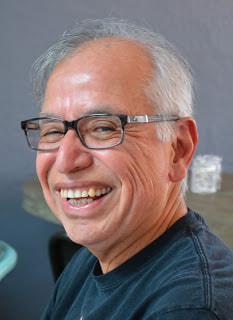 Jesús Mena, the son of undocumented Mexican immigrants from the south Texas Rio Grande Valley, grew up as a migrant farm worker, following the crops each year with his family along the entire US Midwest corridor. He was managing editor of ChismeArte, a pioneering Latino literary journal. After stints as a journalist with various newspapers including the Brownsville Herald, Orange County Register and Oakland Tribune, he became director of media relations for UC-Berkeley and subsequently held a similar post at the Harvard University Kennedy School of Government. Jesús is currently working on a historical novel set in the Rio Grande Valley in the early 1900s. Chicano Confidential My nephews have a rock-and-roll band (Chicano ska) and recently they invited me to hear their new song, “I Don’t Speak No Spanish," that they sang completely in Spanish. I was immediately reminded of my cousin Avelino who years ago (while we were children) used to sing every single Beatle song in English; thing is, he didn’t speak English. Concomitantly in my capacity as the founder of the Salinas Valley Mariachi Conference and Festival, I brought a mariachi from Japan that wowed the primarily Mexican audience when the curtain opened. The Japanese Mariachis could not speak Spanish or English, but sang beautifully from the heart in Spanish. These are but a few concrete examples that cause us to temporarily do what Carlos Castañeda used to call, “Stopping the world!” Castañeda’s paradigm for looking out at the world was to “bracket” situations, “stop them,” and provide detailed analysis to the situation at hand (see Journey to Ixtlan: A Yaqui Way of Knowing). When we are caught off-guard by such experiences, when we temporarily “Stop the world!” as Carlos puts it, and examine social situations at the micro level, we experience a cognitive shift in our assumptions. Even so, I have to ask “What is the real message behind my nephew’s song?” or “What is it about the contradictions in their mixed message?” And why did they make it a point to bring it to my attention? These are young boys whose grandfather was a radical Chicano activist and whose father was a Mexican-American turned Hispanic. They are more than aware of their would-be Chicanismo yet prefer to refer to themselves as “multiracial millennials” and are quite comfortable with that label, just as they are comfortable with the results their father received from FamilyTreeDNA.com, which places his DNA mostly in Western Europe far from Aztlan. For the purposes of this discussion, we will use the term “Latino” to refer to individuals who refer to themselves as Hispanics, Mexican-Americans, Chicanos and/or Spanish. What makes a Latino a Latino (genetically speaking)?" has been recently complicated by the growth of the consumer genetic ancestry testing industry, such as FamilyTreeDNA.com, Ancestry.com, etc. When one is even more specific and asks “What makes a Mexican a Mexican?” or “What makes a Spaniard a Spaniard?” again, genetically speaking the realities of any response is even more complex. For many years, scientists, social and behavioral scientists, and anthropologists have known that the short answer to this question is that, "Being Mexican or Spanish means being multiracial." But that is also true for the majority of humans (whether they personally believe so or not). Humans have always migrated and intermarried. By the end of the first Human Genome Project (2003) and as a result of the popularity of the genetic ancestry testing these as well as other related tests have influenced many DNA test consumers to reassess their identity. How individuals interpret and use genetic test results to affirm or reconstruct their identities varies widely and is an excellent topic of social inquiry. Genome sequencing allows scientists to isolate the DNA of an individual person and identify different codes. A byproduct of this research is the ability to match the physical DNA (materials or the stuff one is actually made up of) to a geographic place—this is what gave birth to the thinking surrounding the consumer ancestry and genetic research industries. My theory is that the widespread use of such tests is in fact changing how the general public views race (genetically determined) and/or how individuals socially construct their self (social psychologically speaking) in everyday life. In short, both of these issues deserve more large-scale study and analysis, most especially as they may contribute to alienation, detachment, self-isolation and the curtailment of the evolving self. Take Dolores as an example: a stone-cold Chicana from the East Side Barrio in San Jose, Califas. Her sisters purchased a genetic ancestry test and the results documented their family's 50% Apache ancestry. Since Dolores became aware of that, she has all but dropped her Chicana identity and become active within the local Native Advisory Council. Now let’s be clear I am not pitting Chicanos against Native Americans; this is not my point at all. My point is focused on how it is that in the evolution of the self (in a social psychological sense), people who take the genetic ancestry test suddenly find themselves presented with new information about their genetic make-up and are immediately impacted by the new information; they “stop the world” and begin to question common assumptions about who they really are and what they stand for. Consumer recipients of new ancestry information like Dolores are often transformed on the spot, experiencing a cognitive shift about common assumptions, what Nietzsche calls a “transvaluation of values,” adopting a new set of values predicated on a new vision for one’s future self-development and evolution of self. Prior to the test results, Dolores identified with her Chicana/Mexican heritage; she was generally aware of her Native heritage through conversations with relatives in California and in New Mexico. The genetic test results have enabled her to rethink/expand/alter her personal and social identities; the results are the fall of one identity (Chicana) and the rise of a new identity (Apache, Native-American Chicana), a more empowered self. From a social psychological perspective, with new information about her ancestry, Dolores transformed from a softer identity to a much stronger one and she is a lot clearer and stronger, empowered if you will, about whom she is and what she stands for as she looks out into the future. Fact is, people with these experiences often look out at the rest of their lives with a new found purpose not yet clearly defined but certainly impacted by a truer self-esteem. Now take the case of Juan in his own words: “My self-development has been problematic since birth and I guess not yet fully realized because I have always lived with the question, “What makes a Mexican a Mexican?” Born in Querétaro, raised and elevated to full teenage-hood as a chilango in Mexico City, I am the grandchild of Asturian immigrants to Mexico. Half of my brothers, bless their hearts, stick to their Spanish heritage and way of speaking. I always suspected they “cling” to it as a form of distinction from the rest of the ‘natives.’ This is indeed a widespread belief among Mexicans of any European descent in Mexico, so there you have it.” You may be interested to know that I know a family of five in South Texas, each with a different Texas accent. Much like Dr. Doolittle, I have observed that accents are tied to values and ideological beliefs. As Juan grew in consciousness in early developmental years, “I started feeling uncomfortable with such consideration that at best cherished my Spanish ancestral side as a source of pride and identity–nothing wrong with that–and at worst accepted the long held belief that the Mexican middle and upper-classes, that in order to be better, you have to be the more European and whiter. Hey, not their fault that it was an official policy of Mr. Porfirio Díaz during the late 19th Century to whiten the nation, blanquear la raza, to improve la patria. While Díaz was ousted at the onset of the Mexican Revolution, the country never quite got rid of the idea of the blanqueo: ¡Ay! comadre, mire nomás que chulo niño tan blanquito y con sus ojitos azules…” Juan continues: “I have always remained proud of my ancestral roots (ironically the poor and dispossessed peasantry of Northern Spain), but I also came to the realization that having been born in Mexico, I was a Mexican, with a Mexican self. And despite being güerito, or a light-skinned Mexican, I would not let anyone question my Mexicanidad.” Having lived in California for the better part of the last 20 years, he has continued consciously to embrace the Mexican identity. Conversely, Juan’s son took the DNA test, and as suspected, he had a 99% European background, with–to Juan’s delight and surprise–a 1% Native American marker. Perhaps a mischievous ancestor traveled in colonial times to Mexico to come back with a regalito. Juan refuses the concept that Mexican-ness ought to be defined solely in terms of genetic ties to ancestral peoples of Mesoamerica, and he salutes and celebrates the profound relationship between the current identities present in Mexico and the United States regarding being Mexican and those cultures and peoples. Brown, the color, bronce, if you prefer, like Vasconcelos once did, is to be celebrated, admired and unequivocally acknowledged as a marker of identity. A Mexican can claim to be Spaniard, indeed, but unfortunately it will carry with it a colonial legacy of a caste-like system that so much determined the development of a society where privilege and injustice has so much hindered the equitable distribution of the wealth of the nation. Juan has chosen to distance himself from such insidious perception. Let me be clear: scientifically speaking there is no common gene pool for "Spaniards" or any other grouping for that matter. In other words, there is great genetic, linguistic, and cultural variation among all Spaniards, past and present. First off, the Spaniards from south of Madrid (the largest geographic area) were all the product of mating with " North Africans," as they were conquered, colonized, and ruled by the Moors (Moros) for over 900 years. This makes them "mestizos" or people who are the product of two distinct peoples. And, nearly all "Spaniards" who came in the early years of the Conquest of the Americas (when Mexico was settled) and who came in search of wealth and to explore the new world are from the province of Andalucía in Southern Spain, and for sure all the "Great Conquistadores," Cortés, Alvarado, Pizarro, etc., the great oppressors, came from the same area in Southern Moorish Spain, specifically the towns of Trujillo and Badajoz, this last one itself a Moorish name, in the province of Extremadura. So that, for example, in beginning any line of inquiry about, “What makes a Mexican a Mexican?” if your parents and their parents are born in Jalisco, Mexico, with a lineage of ancestors in both Mexico and in that region of Spain, anyone claiming to be “Spaniard” must also take into account whether or not their ancestors come from northern or southern Spain, for that divides many of the gene pools of Spain since the 13th century. Again, generalized "tests of genetic inheritance" (like the human genome project, FamilyTreeDNA.com, or Ancestry.com, etc.) do not account for these fine points. This is another way of saying that Mexicans from Jalisco, Mexico, (with traces of Western European DNA) are likely closer descendants of North Africans, for example. Claiming to be Spaniard also stakes a claim to the likelihood that one is of Moorish descent (nearly 1000 years of intimate social interactions); however, this does make them at least partially “Spaniard.” But again, let’s not forget that DNA testing of Spaniards is providing proof that people from Spain are really from everywhere else, just like all other groupings of peoples, how else can I put it? From a social psychological perspective, I’m beginning to get the sense that the genetic testing industry (groups that gather DNA samples from people as seen on television) is causing a shift in the identity of individuals in American society, for those who remain perplexed about who they are or what they stand for; you might even say the project is causing a breakdown in social identity. As a direct result in what the project is reporting to individuals you are hearing more and more people in daily life break down their DNA when asked, “What is your ethnic background?” “I am 20% this and 35% that, etc. just as in the commercial for FamilyTreeDNA.com as seen on TV. It’s a very peculiar time we live in. Alongside alienation caused by modern day social media, we now have this to contribute to the loss of identity. You might say that when a Mexican American born of Mexican parents in Jalisco with a long lineage of Mexican ancestors says he is “Spaniard” projects such as Ancestry.com gives them a way out of not having to identify with being Mexican. Would be “Spaniards” who find the experience of being labelled as “Mexican” stigmatic prefer this logic, whereas Latinos who call themselves Mexican Americans or Chicanos will correct people who refer to them as “Spaniards” by stating “These are not my people!” The process of gathering DNA from people across the globe is at present at least raising many more questions than it can answer at this time. In addition they argue that the more DNA samples they acquire the better the accuracy of their information. But the reality is that just like many other things that have occurred with scientific discoveries, people find an angle for profiting by keeping science ambiguous; with the advent of Teflon for example, marketers sold the public a bill of goods; in pitching the non-stick pan they simply failed to report that over time it will cause stomach cancer. The unspeakable truth about all of the matching from far off relatives and ancestors is that once you have your DNA tested and recorded in the big data archives of FamilyTreeDNA.com you will undoubtedly locate and/or be discovered by close and distant relatives because the system works! You will receive emails like, “New Relatives Found! We found 111 new mtDNA HVR1 match(es) for Sonny Boy Arias (kit N10134299988)” do I dare click on “View My Matches”? Madre mia! It’s like FamilyTreeDNA.com says “Your mtDNA HVR1 test results can help you find new ancestors and relatives on your direct maternal line (your mother’s mother’s mother and so forth). You will want to look at their family tree and email them to find your possible common relatives and ancestors.” I have to ask myself, “Why on earth would I want to connect with relatives I have never known or have not had any contact with, ever? I moved a good distance away from my tightly knit, well organized huge family for the very reason of not making the “cut off” to family wedding, baptismals, birthdays and sometimes even funerals. Good god, that’s all I need right now is to find out I’m related to a serial killer or cannibal serving 3 life sentences in a nearby high security prison and he is eager to “meat” me. Whether it be human genome research, family or ancestor trees or gathering DNA materials what they are finding is that we are all human, but it serves well those who continue separating the world in a Spencerian way in higher and lower specimens of the species. It contributes little to the discussion on identity that is fundamentally a cultural phenomenon where phenotypical elements are at play. Genetically speaking, the Mexican gene pool is as diverse as it gets: from the Mayan, to the Paipai, to the Nahuatl and to the descendants of European immigrants, all of them culturally defined and genetically diverse. In other words, I might not be the descendant of Netzahualcoyotl, but I am darned proud of his insight and sophistication.  Sonny Boy Arias, who writes science friction to educate, amuse and enrich, is a stone-cold, very self-aware Chicano and a dedicated contributor to Somos en escrito via his column, Chicano Confidential. Copyright © Arts and Sciences World Press, 2018. Below the break are some relevant sources that may be helpful and interesting in performing a search for Mexican identity.
DTC Genetic Testing Companies Compared https://wiki.uiowa.edu/display/2360159/DTC+Genetic+Testing+Companies+Compared Shifting Winds: Using Ancestry DNA to Explore Multiracial Individuals’ Patterns of Articulating Racial Identity, 2017 http://www.wcupa.edu/DNADiscussion/documents/identityInteracial.pdf The Genetic Ancestry of African Americans, Latinos, and European Americans across the United States, 2015 https://www.ncbi.nlm.nih.gov/pmc/articles/PMC4289685/ The Genetics of Mexico Recapitulates Native American Substructure and Affects Biomedical Traits, 2014 https://www.ncbi.nlm.nih.gov/pmc/articles/PMC4156478/ Genetic Ancestry Testing and the Meaning of Race, 2016 (12:21 minutes) https://www.youtube.com/watch?v=MQlmX7gvYRA Latinos Get Their DNA Tested, 2016 (4:59 minutes) https://www.youtube.com/watch?v=LCc1N52zSLg New Mexico Hispanics discovering and embracing their indigenous roots, 2016 http://www.santafenewmexican.com/life/features/new-mexico-hispanics-discovering-and-embracing-their-indigenous-roots/article_b951edd4-8002-5d15-876e-83730b71adcb.html |
Archives
June 2024
Categories
All
|
Donate and Make Literature Happen
is published by the Somos En Escrito Literary Foundation,
a 501 (c) (3) non-profit, tax-exempt corporation. EIN 81-3162209

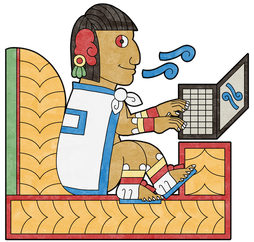
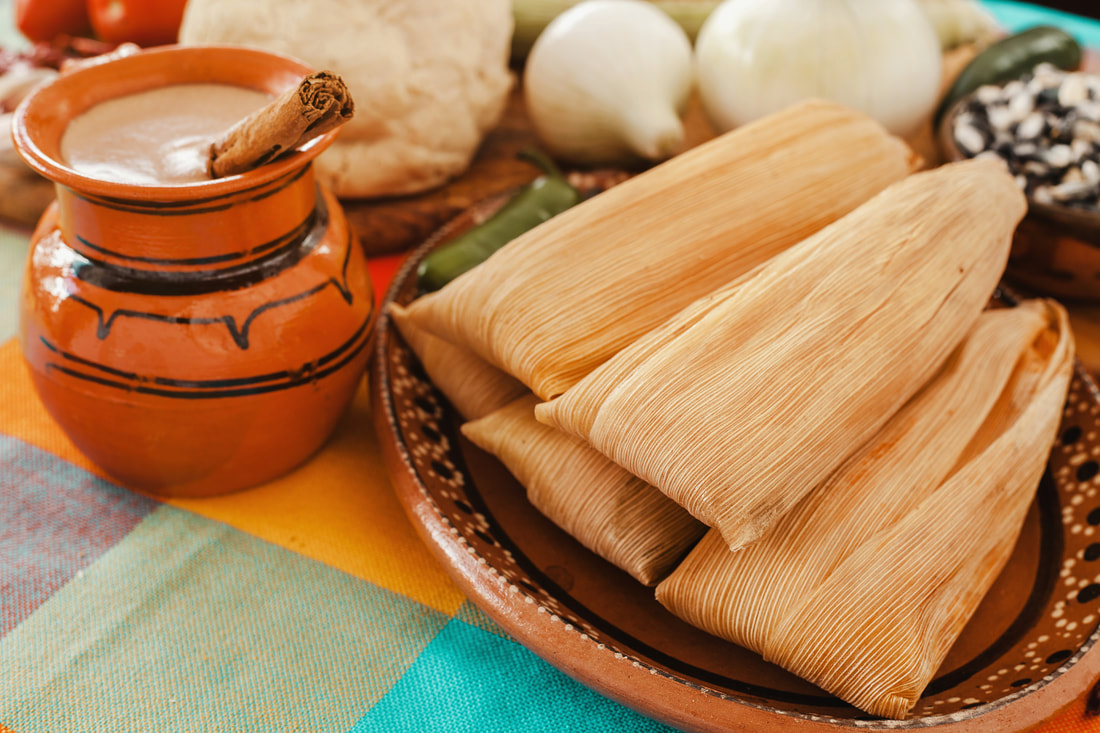
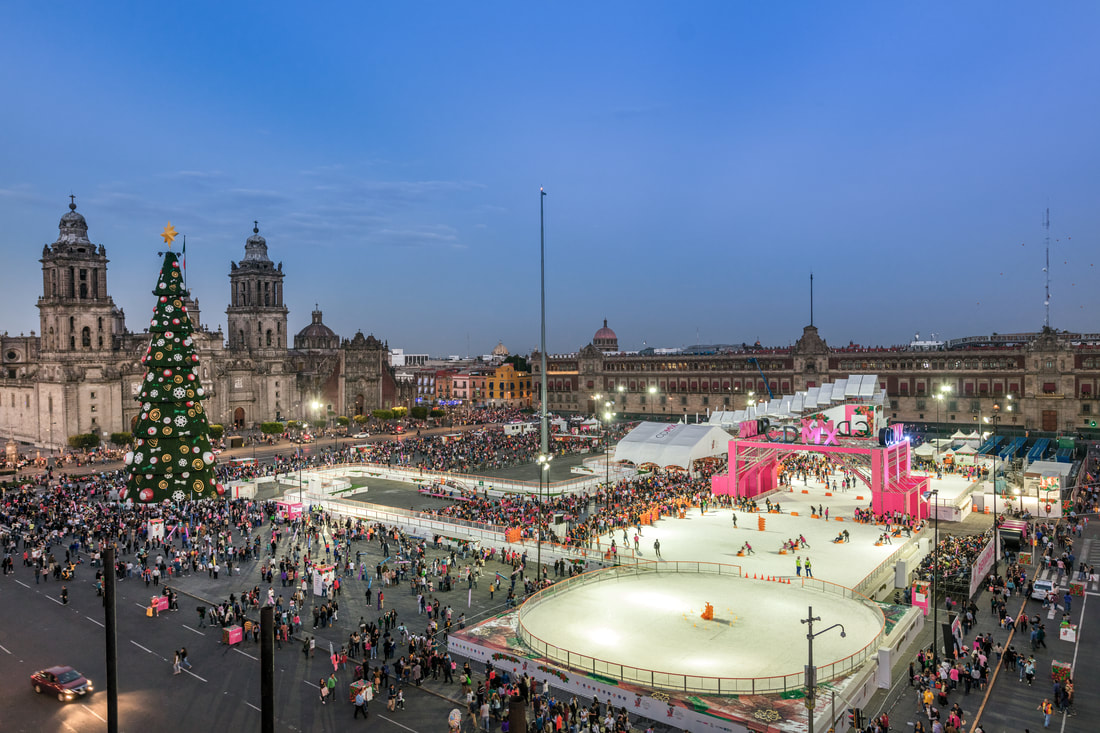
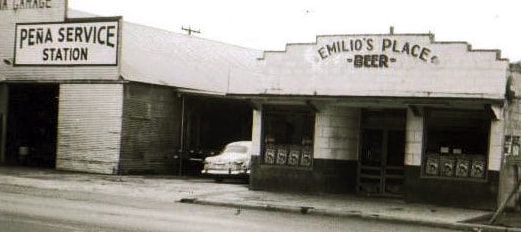
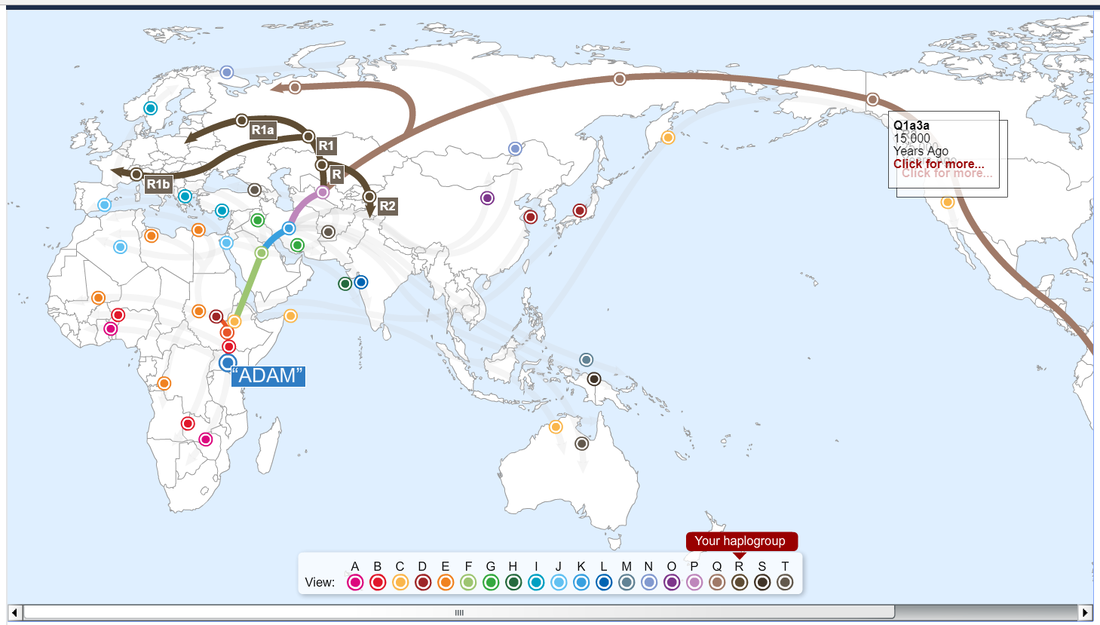
 RSS Feed
RSS Feed